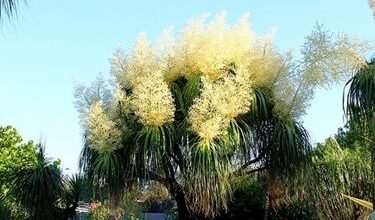Information about the plant Hechtia : Tips for the care of the plant Hechtia
Bromeliads are fairly common houseplants with a tropical scent and unusual, fun growth. There are more than 50 varieties of Hechtia Bromeliads, most of which are native to Mexico. What is Hechtia? Hechtia is a terrestrial plant with the characteristic rosette shape of most bromeliads. One of the most interesting facts about the Hechtia plant is that it has similar characteristics to succulents but is not a true succulent. However, Hechtia is drought tolerant and has an astonishing resistance to cold for plants from warm regions.
What is Hechtia?
There are about 56 genera in the bromeliad family. Hechtias belong to the subfamily Pitcairnioideae, and are wonderful little examples of the shape of the plant. They are most often grown indoors or in greenhouses, but some areas can support outdoor growth as long as the plants are not subjected to temperatures below 20 degrees Fahrenheit (-6 C.).
These small bromeliads thrive from Texas to Mexico and Central America. They are found in areas where cacti and other succulents are present and where soils are hard and arid.
The thick, waxy leaves are sword-shaped and radiate from a central point in a rosette. The edges of the leaf may have some teeth. The genus has a rainbow of colours in both the foliage and the flower. The leaves can be tinted bronze, gold, red, purple and pink.
The flowers are born on erect stems and are usually white but may be pink or yellow. Plants grow slowly but some forms can grow up to 1.5 m wide and a flower stalk up to 1.5 m high.
Information about the plant Hechtia
The first ingredient for growing Hechtia plants is well-drained soil. Its native region is sandy, rocky and generally not very fertile. The plants collect dew and rainwater in the cup-shaped core that forms the leaves.
You can easily grow plants from seed, but with their low growth rate, you will have to wait years to get a plant of adequate size. A better way is to divide the offspring produced at the base of the mother plant. This is valuable information about the Hechtia plant, as it can cut the growth time of recognizable plants in half. Use good thick gloves to separate the pup, as they are protected by sharp spines.
The care of Hechtia bromeliads is similar to that of any bromeliad. Use a succulent mixture for the cultivation of Hechtia plants. The puppies should be planted in a mixture of peat and perlite until the young bromeliad has a good root system. Bright light and warm daytime temperatures, with nighttime temperatures 10 to 20 degrees lower, will produce the best growth.
Hectia Bromeliad Care
The care of Hechtia plants in containers requires careful moisture management. Excessive watering can cause the plant to rot at the base and insufficient watering limits growth. In spring and summer, water the plant regularly, but reduce watering in autumn and winter when the plant is dormant.
Lighting is a crucial part of Hechtia’s plant care. They need a full day of sunlight, but can survive in an environment with 50% shade. Lower light levels will affect growth rate, flower production and leaf colour.
As a plant living in poor soil, Hechtia does not really need to be fertilized. Feed the plant in the spring and perhaps early summer for faster growth.
Unlike most succulents, the Hechtia likes large pots and does not behave well when tightly packed. If the season is hot and dry, increase the humidity by placing the pot in a saucer filled with small stones and water. Hechtia is an easy to care for plant and will surprise you year after year.

